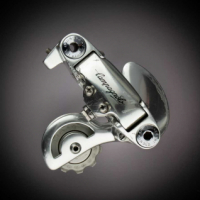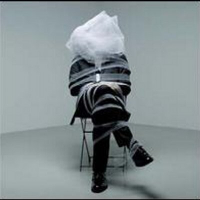Seemingly trivial things that intrigue you
Comments
-
My cf C40 was a 1994 design and definitely had more compliance than my steel frame (Columbus SLX).
In fact, Colnago produced a cf frame (Olympic TT) in 1984. Vitus* produced the Carbone 3 in the early 80's, then the 7 then the 9 in '86.
That C40 was by far the most comfortable ride I have owned and despite being much stiffer, the C60 is like a magic carpet especially on cf bars, stem, seatpin and 28mm tyres.
The Merlin frame sale email came through yesterday. So I had a look at what was on offer just out of curiosity and one of the frames was the Wilier Filante.
One review said that it was 'surprisingly comfortable'* to ride and I clicked a link to Wilier's website. According to Wilier, they are using different bonding resins to absorb shocks and road vibrations. This is sophisticated stuff because it suggests that a stiff frame does not necessarily = a harsh ride and I doubt they are the only frame manufacturer. doing this. Stiffness without the discomfort (aggressive frame geometries aside). Surprisingly for me, the frame has a fork tube you can cut instead of a slammed integrated system but that's a digression.
*Now owned by Wiggle !
**Given that the authors work for companies that get commission from what is effectively advertising, I am always sceptical about such statements.
Anyway, in 10 years time, all this stuff will seem dated and we will appear like luddites (if we don't already).
Airflow that is separated by a wide tyre is able to reattach better to a wider rim than to a narrow rim, reducing drag. Even if fitting a wide tyre on a narrow rim doesn't improve the aerodynamics, you might consider it a swap worth making for other reasons, such as extra comfort.seanoconn - gruagach craic!0 -
Back to the spring analogy.
Compare a series of medium sping constant springs, with a series of high spring constant springs in series with a low spring constant spring.
Thus is how to view the parts of a bike between your foot and the road.
So if you add a squishy tyre to compensate for stiff wheels and a stiff frame, you undo a lot of the benefits. Similarly, where I read marketing guff about improved ride quality from carbon spokes or something like that, I know that means flex, and in turn I know that will probably cancel out the benefit of 47mm outboard bearings, asymmetrical chainstays and a bb so big you struggle to fit a 2x.0 -
I guess the forces on the constituent parts for power transfer are not in the same direction or type as vibrations for comfort.
So you can try to engineer spokes that don't twist torsionally (when you put the power down) but then flex a little in the direction of the tension for comfort.
Which is presumably why rear wheels are laced differently to front wheels.
Again, I think the advantage for carbon fibre is there is more room to engineer which direction there is flex and stiffness than with a metal or an alloy.0 -
Variable wall thickness steel tubing has been a thing for quite a while.The above may be fact, or fiction, I may be serious, I may be jesting.
I am not sure. You have no chance.Veronese68 wrote:PB is the most sensible person on here.0 -
Is it?First.Aspect said:Back to the spring analogy.
Compare a series of medium sping constant springs, with a series of high spring constant springs in series with a low spring constant spring.
Thus is how to view the parts of a bike between your foot and the road.
Are you confusing the shock absorbing and elastic properties of a material with a spring? The physical travel of the elasticity in cf is minimal, else the frame would delaminate quickly. The physical travel of a steel tube under torsional stress is also minimal. Unlike a spring.
The first frames were simply scaffolding.
The only aero consideration was drop handlebars.
As technology improved, weight and stiffness was addressed.
For some 80, 90,100 years(?), aside from steel quality, lightness and strength, the bike frame hardly changed. Straight forks didn't enter the scene until the late 80's and the rake was evident for over 100 years. Springs on bikes appeared in the late 1880's but you never saw them on racing machines apart from on saddles. Probably as they were ineffectual at creating a bike for speed.
The 90's saw the dawn of Aluminium, Scandium, cf, titanium and there was still steel frames widely used but cf changed the game. It changed the game because of it's versatility whereas before, the parameters were set by variable tube thickness and carbon content of steel whereas cf has limitless design capability: density, layers, weave, resins.
The next revolution was power meters. Now all of a sudden, losses in the transmission of power/frame flex could be measured.
I do not see how a tube with high torsional rigidity can be likened to a spring. I don't know how a set of tubes that makes up a frame can be seen as a set of springs as springs are very bad at delivering torsional rigidity. A stiff tube does not behave in the same way as a spring. A tube has torsional and tensile strength way above a spring as the spring is a solid bar turned into a spiral (yes I know hollow springs exist). Indeed, steel frames have an inherent behaviour which is likened to a spring but the travel of the torsion is minimal and therefore, the comparison to a spring is minimal when the steel has an elasticity (depending on its material content). Elasticity is not the same as 'spring'. 'Springs' do not aid the transfer of power. They would be a hindrance and a spring has latency whereas a stiff torsional tube has a small latency (dependent on it's modulus of elasticity). Frame reviews often talk about how quickly power is transferred.
Could you imagine a long spring deployed as a drive shaft in a vehicle?
"In this application, “strength” is defined by a material’s resistance to deformation or “modulus of elasticity”. Both carbon fibre and steel have moduli of elasticity upwards of 200 gigapascals (GPa) so either material is remarkably stiff and ideal for a number of high-stress applications." The major difference is that for the identical rigidity, cf is 5 times lighter than steel.
Note; 'remarkably stiff'.
Frame manufacturers are producing frames that try to overcome the triple constraint:
Rigidity (for power transfer)
Lightness
Comfort
(Pick any two).
If all the factors that add up to faster bikes - lightness, rigidity, power transfer, aero gains, materials (ceramics) etc need any proof, the current pro peloton is going far quicker on average than during the EPO era.
Though I think that it is very hard to say how much influence power meters have had.
seanoconn - gruagach craic!0 -
...and yes, there's a helluva lot of marketing guff.
seanoconn - gruagach craic!0 -
Not read in detail, but you are mistaken if you think elastic deformation in cf is fundamentally different from what you get with elastomer.
The spring analogy is a huge over simplification, obviously, but the flex you will experience as a rider where you have one weak spring and lots of stiff springs is predominantly the weak spring.
This is why when you have a stiff bike on 32 tyres at 65 psi, pretty much all you can feel is the sensation of having a puncture.
Let me ask you this - when you are honking that stiff frame out of the saddle, what are the tyres doing?0 -
Uh?! You must ride different bikes to me FA.
"Not read in detail, but you are mistaken if you think elastic deformation in cf is fundamentally different from what you get with elastomer".
Mixing things up again?
Of my two bikes which are very similarly specced, the Wilier is much inferior to my Colnago.(the Wilier frame being inexpensive). Both with Record gruppo, identical saddle, similar tyre width, same rim width.
The difference is that the Colnago (despite being stiffer) is actually more comfortable and no, I do not feel like I am riding on a puncture either bike.
I ride iro 70psi with 28mm's. I'm 64 kg's. How heavy are you?seanoconn - gruagach craic!0 -
Pretty sure the first wooden bicycles had crude steel leaf springs so it's not a new issue (and lots of springs are non-helical)pinno said:
Is it?First.Aspect said:Back to the spring analogy.
Compare a series of medium sping constant springs, with a series of high spring constant springs in series with a low spring constant spring.
Thus is how to view the parts of a bike between your foot and the road.
Are you confusing the shock absorbing and elastic properties of a material with a spring? The physical travel of the elasticity in cf is minimal, else the frame would delaminate quickly. The physical travel of a steel tube under torsional stress is also minimal. Unlike a spring.
The first frames were simply scaffolding.
The only aero consideration was drop handlebars.
As technology improved, weight and stiffness was addressed.
For some 80, 90,100 years(?), aside from steel quality, lightness and strength, the bike frame hardly changed. Straight forks didn't enter the scene until the late 80's and the rake was evident for over 100 years. Springs on bikes appeared in the late 1880's but you never saw them on racing machines apart from on saddles. Probably as they were ineffectual at creating a bike for speed.
The 90's saw the dawn of Aluminium, Scandium, cf, titanium and there was still steel frames widely used but cf changed the game. It changed the game because of it's versatility whereas before, the parameters were set by variable tube thickness and carbon content of steel whereas cf has limitless design capability: density, layers, weave, resins.
The next revolution was power meters. Now all of a sudden, losses in the transmission of power/frame flex could be measured.
I do not see how a tube with high torsional rigidity can be likened to a spring. I don't know how a set of tubes that makes up a frame can be seen as a set of springs as springs are very bad at delivering torsional rigidity. A stiff tube does not behave in the same way as a spring. A tube has torsional and tensile strength way above a spring as the spring is a solid bar turned into a spiral (yes I know hollow springs exist). Indeed, steel frames have an inherent behaviour which is likened to a spring but the travel of the torsion is minimal and therefore, the comparison to a spring is minimal when the steel has an elasticity (depending on its material content). Elasticity is not the same as 'spring'. 'Springs' do not aid the transfer of power. They would be a hindrance and a spring has latency whereas a stiff torsional tube has a small latency (dependent on it's modulus of elasticity). Frame reviews often talk about how quickly power is transferred.
Could you imagine a long spring deployed as a drive shaft in a vehicle?
"In this application, “strength” is defined by a material’s resistance to deformation or “modulus of elasticity”. Both carbon fibre and steel have moduli of elasticity upwards of 200 gigapascals (GPa) so either material is remarkably stiff and ideal for a number of high-stress applications." The major difference is that for the identical rigidity, cf is 5 times lighter than steel.
Note; 'remarkably stiff'.
Frame manufacturers are producing frames that try to overcome the triple constraint:
Rigidity (for power transfer)
Lightness
Comfort
(Pick any two).
If all the factors that add up to faster bikes - lightness, rigidity, power transfer, aero gains, materials (ceramics) etc need any proof, the current pro peloton is going far quicker on average than during the EPO era.
Though I think that it is very hard to say how much influence power meters have had.1985 Mercian King of Mercia - work in progress (Hah! Who am I kidding?)
Pinnacle Monzonite
Part of the anti-growth coalition0 -
- Genesis Croix de Fer
- Dolan Tuono0 -
I love that.pangolin said:I take it back, FA is on to something
 https://www.youtube.com/watch?v=N39uwTykTQk
https://www.youtube.com/watch?v=N39uwTykTQk
0 -
Question of degrees innit.pinno said:Uh?! You must ride different bikes to me FA.
"Not read in detail, but you are mistaken if you think elastic deformation in cf is fundamentally different from what you get with elastomer".
Mixing things up again?
Of my two bikes which are very similarly specced, the Wilier is much inferior to my Colnago.(the Wilier frame being inexpensive). Both with Record gruppo, identical saddle, similar tyre width, same rim width.
The difference is that the Colnago (despite being stiffer) is actually more comfortable and no, I do not feel like I am riding on a puncture either bike.
I ride iro 70psi with 28mm's. I'm 64 kg's. How heavy are you?0 -
I do too. It kind of proves my point.First.Aspect said:
I love that.pangolin said:I take it back, FA is on to something
 https://www.youtube.com/watch?v=N39uwTykTQk
https://www.youtube.com/watch?v=N39uwTykTQk
BTW, that ^ bloke built a tunnel under his garage to his house. Long but worth a watch.
seanoconn - gruagach craic!0 -
It doesn't. It's a question of degrees innit?pinno said:
I do too. It kind of proves my point.First.Aspect said:
I love that.pangolin said:I take it back, FA is on to something
 https://www.youtube.com/watch?v=N39uwTykTQk
https://www.youtube.com/watch?v=N39uwTykTQk
BTW, that ^ bloke built a tunnel under his garage to his house. Long but worth a watch.
I once had an early Specialized bike with alloy lugs and carbon tubes. Most flexible bike I've ever ridden. You could totally feel the back wheel moving side to side on rough descents.
Tells me there is a stiffness sweet spot, which is stiffer than the 1980s but springier than 2020.
0 -
Oooer missus.First.Aspect said:
It doesn't. It's a question of degrees innit?pinno said:
I do too. It kind of proves my point.First.Aspect said:
I love that.pangolin said:I take it back, FA is on to something
 https://www.youtube.com/watch?v=N39uwTykTQk
https://www.youtube.com/watch?v=N39uwTykTQk
BTW, that ^ bloke built a tunnel under his garage to his house. Long but worth a watch.
I once had an early Specialized bike with alloy lugs and carbon tubes. Most flexible bike I've ever ridden. You could totally feel the back wheel moving side to side on rough descents.
Tells me there is a stiffness sweet spot, which is stiffer than the 1980s but springier than 2020.
seanoconn - gruagach craic!0 -
Why someone would put up a photo of Ike Turner with Tina Turner (who's just died, age 83), given he raped and beat her, with the words "Good times".
And yes, it's that zero tolerance head teacher the Tories so like.
0 -
A question for frequent EasyJet fliers... I had two friends coming with me on Friday, but because of illness of an elderly relative, they've had to back out... do I need to tell EasyJet (I couldn't see an obvious way to do it online), or do they just not turn up?0
-
I guess as long as they haven’t checked in then they simply don’t turn up.0
-
Pross said:
I guess as long as they haven’t checked in then they simply don’t turn up.
That's what I was thinking. I'm trying to find a way to check in one-by-one, but can't see a way to do that...0 -
She claims it was just the first image she came to and didn't realise it was Ike Turner. It's not an entirely plausible explanation.briantrumpet said:Why someone would put up a photo of Ike Turner with Tina Turner (who's just died, age 83), given he raped and beat her, with the words "Good times".
And yes, it's that zero tolerance head teacher the Tories so like.1985 Mercian King of Mercia - work in progress (Hah! Who am I kidding?)
Pinnacle Monzonite
Part of the anti-growth coalition0 -
rjsterry said:
She claims it was just the first image she came to and didn't realise it was Ike Turner. It's not an entirely plausible explanation.briantrumpet said:Why someone would put up a photo of Ike Turner with Tina Turner (who's just died, age 83), given he raped and beat her, with the words "Good times".
And yes, it's that zero tolerance head teacher the Tories so like.
If she was that ignorant about Tina Turner, she might have thought twice about jumping on the tribute bandwagon.2 -
One for the architects here; on modern buildings, do the designers take into account the sort of staining you get around boiler or other water vapour outlets?
There’s a row of new (sub 5 years) flats by the train line with a big flat cream side of the building.
Looked smart a few years ago but now it’s just a canvass for mucky grey circles of stain around the outlets.0 -
They should do. It's not necessarily a decision that an architect has made, though. It's also the case that dirt just shows up more on new buildings. If you repair the brickwork on an old building you often need to soot-wash the new brickwork to match the old.rick_chasey said:One for the architects here; on modern buildings, do the designers take into account the sort of staining you get around boiler or other water vapour outlets?
There’s a row of new (sub 5 years) flats by the train line with a big flat cream side of the building.
Looked smart a few years ago but now it’s just a canvass for mucky grey circles of stain around the outlets.1985 Mercian King of Mercia - work in progress (Hah! Who am I kidding?)
Pinnacle Monzonite
Part of the anti-growth coalition0 -
Vertical flues are much better but often not viable depending on layout.rick_chasey said:One for the architects here; on modern buildings, do the designers take into account the sort of staining you get around boiler or other water vapour outlets?
There’s a row of new (sub 5 years) flats by the train line with a big flat cream side of the building.
Looked smart a few years ago but now it’s just a canvass for mucky grey circles of stain around the outlets.
But this is an exciting read:
https://www.skillstg.co.uk/blog/boiler-flue-regulations/#:~:text=The exact distance will depend,an open door or window.seanoconn - gruagach craic!0 -
briantrumpet said:Pross said:
I guess as long as they haven’t checked in then they simply don’t turn up.
That's what I was thinking. I'm trying to find a way to check in one-by-one, but can't see a way to do that...
Looks like I'm getting it sorted via Twitter messaging - they'll cancel my two friends' tickets and refund the government tax.0 -
Similarly with metal fixtures and fittings in areas where they are prone to rust. Lovely rust streaks down light painted walls. This tends to more houses where the owners add things rather than the original design but you do also get it from things such as guttering, flues and downpipes.rick_chasey said:One for the architects here; on modern buildings, do the designers take into account the sort of staining you get around boiler or other water vapour outlets?
There’s a row of new (sub 5 years) flats by the train line with a big flat cream side of the building.
Looked smart a few years ago but now it’s just a canvass for mucky grey circles of stain around the outlets.0 -
Why can I book American Airline flights through Iberia for much less than I can through AA?0
-
This comes down to correct specification - stainless fixings for exterior use; thinking about whether bright white is really a good choice for the exterior of a building - and not undercutting that specification to save a few quid.Pross said:
Similarly with metal fixtures and fittings in areas where they are prone to rust. Lovely rust streaks down light painted walls. This tends to more houses where the owners add things rather than the original design but you do also get it from things such as guttering, flues and downpipes.rick_chasey said:One for the architects here; on modern buildings, do the designers take into account the sort of staining you get around boiler or other water vapour outlets?
There’s a row of new (sub 5 years) flats by the train line with a big flat cream side of the building.
Looked smart a few years ago but now it’s just a canvass for mucky grey circles of stain around the outlets.1985 Mercian King of Mercia - work in progress (Hah! Who am I kidding?)
Pinnacle Monzonite
Part of the anti-growth coalition0 -
Client: That looks really nice, how much is it?rjsterry said:
This comes down to correct specification - stainless fixings for exterior use; thinking about whether bright white is really a good choice for the exterior of a building - and not undercutting that specification to save a few quid.Pross said:
Similarly with metal fixtures and fittings in areas where they are prone to rust. Lovely rust streaks down light painted walls. This tends to more houses where the owners add things rather than the original design but you do also get it from things such as guttering, flues and downpipes.rick_chasey said:One for the architects here; on modern buildings, do the designers take into account the sort of staining you get around boiler or other water vapour outlets?
There’s a row of new (sub 5 years) flats by the train line with a big flat cream side of the building.
Looked smart a few years ago but now it’s just a canvass for mucky grey circles of stain around the outlets.
Architect: £££
Client: Oh. Can we make it ££?
Architect: Yes but it won't look as nice or last as long.
Client: That's fine, i dont have to live there, I just need it to get past the warranty period.0 -
How the BBC manages to generate so many hours of TV out of the Chelsea Flower Show1










